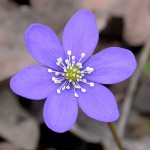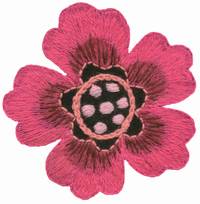 Common bluebell (Hepatica nobilis) is a species of plant in the family of the buttercups, in the family of the buttercups. To make realistic embroidery of buttercups, familiarize yourself with the details. The common buttercup is a perennial herb. The age of the species is estimated to be 40–50 million years.
Common bluebell (Hepatica nobilis) is a species of plant in the family of the buttercups, in the family of the buttercups. To make realistic embroidery of buttercups, familiarize yourself with the details. The common buttercup is a perennial herb. The age of the species is estimated to be 40–50 million years.
Appearance and life cycle.
The height of the blue flower is usually 10–20 cm, starting at 5 cm, sometimes up to 25 cm. The flowers open at the end of a very short stem.
Each stem has one flower. In nature, there are 8–12 flowering stems on one plant. The stem has no leaves, except for three small, erect leaves directly below the flower. The stems are fine, hairy, reddish-brown in color, the hairs are green. The stems are hairy to protect against early spring frosts.
The diameter of a bluebell flower is usually 2–3 cm in Estonia, up to 4 cm, and up to 6 cm worldwide. The flowers are divided into six, sometimes five or seven, perianths. The perianth is formed by sepals, there are no petals. The perianth is crown-shaped. The sepals are usually dull blue or sky blue. White, pink, purple and purple flowers also occur.
The flowers are bisexual. The stamens are white or almost white, the anther head is red or white. There are many stamens and pistils. The pistils lack feathery tails.
Flowering time
Bluebells bloom from February to May, depending on location and weather conditions, in Estonia from late March to May. Bluebells are one of the first plants to bloom in spring. Because they need more light during flowering, they must bloom before the deciduous trees start to leaf out.
One flower is open for 8–10 days. At night and in bad weather, the flowers close.
In Estonia, bluebells are not yet protected. In order not to destroy bluebells, they should not be plucked or picked too many. Let's put these beautiful flowers on embroidery instead.
You can find the Blue Flower Gallery HERE.
You can find the video HERE.
Facts From Wikipedia.
